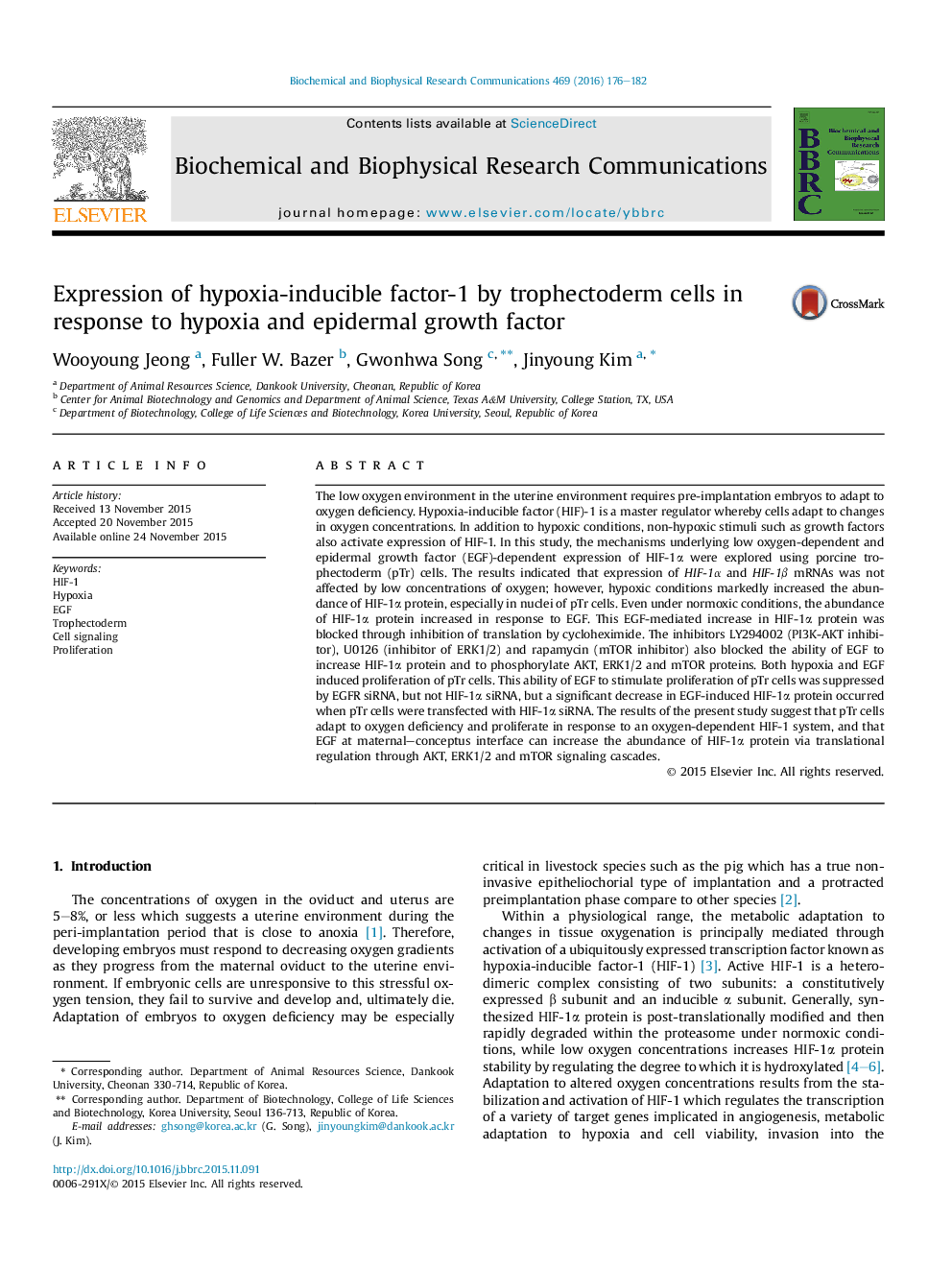| Article ID | Journal | Published Year | Pages | File Type |
|---|---|---|---|---|
| 10750334 | Biochemical and Biophysical Research Communications | 2016 | 7 Pages |
Abstract
The low oxygen environment in the uterine environment requires pre-implantation embryos to adapt to oxygen deficiency. Hypoxia-inducible factor (HIF)-1 is a master regulator whereby cells adapt to changes in oxygen concentrations. In addition to hypoxic conditions, non-hypoxic stimuli such as growth factors also activate expression of HIF-1. In this study, the mechanisms underlying low oxygen-dependent and epidermal growth factor (EGF)-dependent expression of HIF-1α were explored using porcine trophectoderm (pTr) cells. The results indicated that expression of HIF-1α and HIF-1β mRNAs was not affected by low concentrations of oxygen; however, hypoxic conditions markedly increased the abundance of HIF-1α protein, especially in nuclei of pTr cells. Even under normoxic conditions, the abundance of HIF-1α protein increased in response to EGF. This EGF-mediated increase in HIF-1α protein was blocked through inhibition of translation by cycloheximide. The inhibitors LY294002 (PI3K-AKT inhibitor), U0126 (inhibitor of ERK1/2) and rapamycin (mTOR inhibitor) also blocked the ability of EGF to increase HIF-1α protein and to phosphorylate AKT, ERK1/2 and mTOR proteins. Both hypoxia and EGF induced proliferation of pTr cells. This ability of EGF to stimulate proliferation of pTr cells was suppressed by EGFR siRNA, but not HIF-1α siRNA, but a significant decrease in EGF-induced HIF-1α protein occurred when pTr cells were transfected with HIF-1α siRNA. The results of the present study suggest that pTr cells adapt to oxygen deficiency and proliferate in response to an oxygen-dependent HIF-1 system, and that EGF at maternal-conceptus interface can increase the abundance of HIF-1α protein via translational regulation through AKT, ERK1/2 and mTOR signaling cascades.
Related Topics
Life Sciences
Biochemistry, Genetics and Molecular Biology
Biochemistry
Authors
Wooyoung Jeong, Fuller W. Bazer, Gwonhwa Song, Jinyoung Kim,
